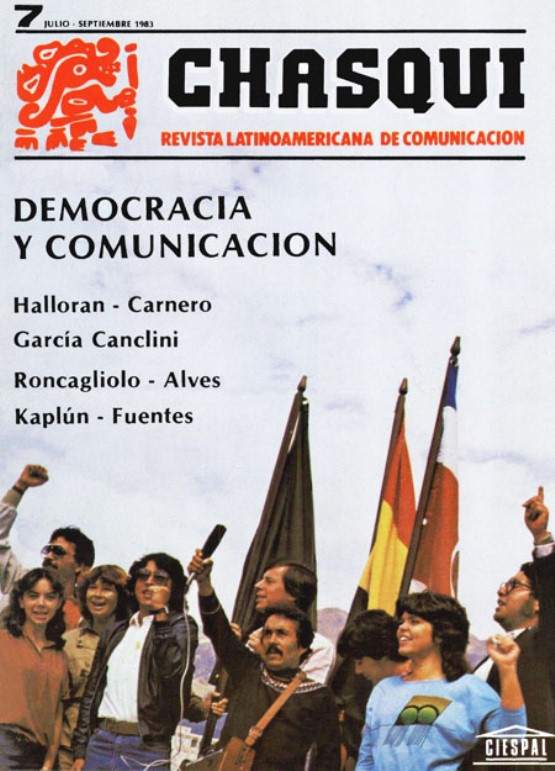La Comunicación Popular ¿Alternativa válida?
DOI:
https://doi.org/10.16921/chasqui.v0i7.1736Keywords:
democracia, políticas nacionales de comunicación, radiodifusión, medios populares, comunicación de baseAbstract
Dentro del naciente movimiento que hoy brega por un nuevo orden de la comunicación, por construir una comunicación democrática y al servicio de las mayorías, es posible distinguir dos corrientes o tendencias. No opuestas ni antagónicas; por el contrario, con amplios planos de convergencia en sus premisas y en sus metas últimas; pero, con todo, diferentes. Con el riesgo que supone toda simplificación, podemos tal vez caracterizarlas diciendo que una se sitúa a nivel "macro"" en tanto la otra se ubica a nivel ""micro"". La primera tendencia pone el énfasis en la necesidad de políticas nacionales e internacionales de comunicaciónReferences
MARÍA CRISTINA MATA: ¿La alternativa legalizada? Una lectura precavida del Informe MacBride. En "Por una información libre y liberadora", CELADEC, Lima, 1982, p. 168.
JUAN DÏAZ BORDENAVE: Democratización de la comunicación: teoría y práctica. En CHASQUI N°1, CIESPAL, QUITO, Octubre de 1981, p. 19.
Downloads
Published
20-07-1983
Issue
Section
Otros
License
- Authors retain copyright and grant the journal right of first publication with the work simultaneously licensed under a Creative Commons Attribution-NoDerivs License (CC BY-ND) that allows others to share the work with an acknowledgement of the work's authorship and initial publication in this journal.
- Authors are able to enter into separate, additional contractual arrangements for the non-exclusive distribution of the journal's published version of the work (e.g., post it to an institutional repository or publish it in a book), with an acknowledgement of its initial publication in this journal.
- Authors are permitted and encouraged to post their work online.

